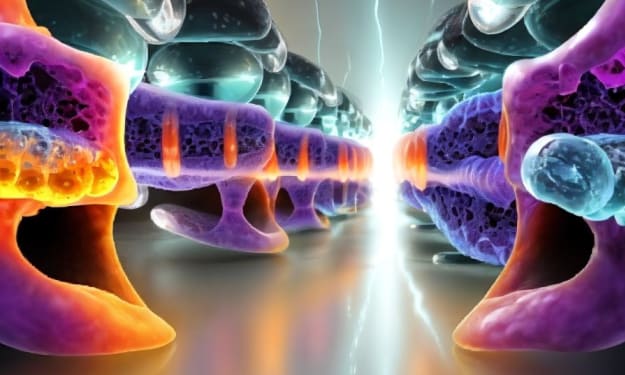The Therapeutic Potential of Art: Using Creativity as an Outlet for Depression
Exploring the Healing Power of Artistic Expression in the Journey Towards Mental Well-being

Introduction:
Depression can often leave individuals feeling trapped in a cycle of negative thoughts and emotions. However, the creative process can offer a transformative outlet for self-expression and emotional release. In this article, we delve into the therapeutic potential of art and how it can serve as a powerful tool for individuals struggling with depression. Join us as we explore the healing benefits of artistic expression and discover how embracing creativity can contribute to the journey towards mental well-being.
1. Understanding Art Therapy:
- Art therapy is an established form of therapy that utilizes artistic expression to facilitate healing and enhance psychological well-being. Through the use of various art mediums and techniques, individuals can access and communicate their thoughts, emotions, and experiences in a non-verbal and symbolic manner. Art therapy provides a safe and supportive space for exploring and processing feelings associated with depression.
2. Unlocking Emotional Expression:
- Depression often stifles emotional expression, making it challenging to articulate inner struggles. Artistic expression provides an outlet for channeling emotions, enabling individuals to express their innermost thoughts and feelings visually. The act of creating art can bypass the limitations of verbal communication, offering a release for pent-up emotions and facilitating a deeper understanding of one's own experiences.
3. Fostering Self-Exploration and Reflection:
- Engaging in artistic endeavors encourages self-exploration and reflection. The creative process allows individuals to delve into their inner world, exploring personal narratives, memories, and perceptions. Through art, individuals can gain insights into their emotions, triggers, and patterns of thinking, fostering self-awareness and facilitating growth and healing.
4. Empowering and Building Self-Esteem:
- Artistic expression provides a sense of accomplishment and empowerment. Creating something tangible and meaningful can boost self-esteem and confidence, counteracting the negative self-perceptions often associated with depression. The act of creating art instills a sense of purpose and pride, allowing individuals to reconnect with their strengths and capabilities.
5. Encouraging Mindfulness and Relaxation:
- Engaging in art promotes mindfulness and relaxation, offering respite from the constant mental chatter that accompanies depression. When immersed in the creative process, individuals can enter a state of flow, experiencing a sense of timelessness and heightened focus. This state of mindfulness fosters relaxation, reduces stress, and promotes a sense of calm and tranquility.
6. Providing a Safe Outlet for Emotional Release:
- Art can serve as a safe outlet for releasing intense emotions associated with depression. Through painting, drawing, sculpting, or other art forms, individuals can externalize and process their emotions in a controlled and constructive manner. Artistic expression allows for the release of pent-up feelings, offering a cathartic experience and facilitating emotional healing.
7. Cultivating Self-Compassion and Acceptance:
- Artistic expression encourages self-compassion and acceptance. By embracing the imperfections and uncertainties inherent in the creative process, individuals can practice self-compassion and let go of self-judgment. Artistic pursuits remind individuals that mistakes and imperfections are part of the journey, fostering self-acceptance and a gentler attitude towards oneself.
8. Connecting with Others through Art:
- Art can create opportunities for connection and social support. Engaging in artistic activities within a community or participating in art-focused events and workshops allows individuals to connect with like-minded individuals who share similar interests and experiences. These connections can foster a sense of belonging, reduce feelings of isolation, and provide a supportive network for individuals grappling with depression.
9. Promoting a Sense of Purpose and Meaning:
- Artistic expression can infuse life with a sense of purpose and meaning, particularly for individuals experiencing depression. Engaging in creative pursuits allows individuals to tap into their passions, interests, and unique talents. The process of creating art can provide a sense of direction and fulfillment, reminding individuals of their inherent worth and the meaningful contributions they can make through their creative endeavors.
10. Inspiring Hope and Resilience:
- Art has the power to inspire hope and foster resilience in the face of depression. Creating art allows individuals to tap into their inner resilience, exploring themes of growth, transformation, and personal narratives of overcoming adversity. Through art, individuals can symbolically represent their journey towards healing, reminding themselves of their capacity to overcome challenges and find light amidst darkness.
11. Integrating Art into Daily Life:
- Incorporating art into daily life can have lasting benefits for individuals experiencing depression. Whether it's dedicating a specific time for artistic pursuits, integrating creative practices into daily routines, or surrounding oneself with art that brings joy and inspiration, incorporating art into daily life creates an ongoing avenue for self-expression, emotional release, and personal growth.
12. Seeking Guidance from Art Therapists and Professionals:
- To fully harness the therapeutic potential of art, seeking guidance from art therapists or professionals trained in art therapy can be immensely beneficial. These professionals can provide expert guidance, facilitate the exploration of emotions and themes through art, and offer personalized strategies to enhance the healing journey. Art therapy sessions can provide a structured and supportive environment for individuals to engage in the creative process and receive professional guidance.
Conclusion:
Artistic expression holds immense therapeutic potential for individuals grappling with depression. Through art, individuals can unlock emotional expression, foster self-exploration and reflection, build self-esteem, and find solace in creative mindfulness. Art provides a safe outlet for emotional release, cultivates self-compassion and acceptance, and creates opportunities for connection and support. By embracing creativity as an outlet for depression, individuals can tap into their inner resilience, find meaning and purpose, and navigate their journey towards mental well-being. Let the power of artistic expression guide you towards healing, transformation, and renewed hope.
About the Creator
Lomat Al Noor
My goal is to captivate readers and provide them with valuable insights and knowledge. I am dedicated to delivering content that informs, inspires, and entertains.
Enjoyed the story? Support the Creator.
Subscribe for free to receive all their stories in your feed. You could also pledge your support or give them a one-off tip, letting them know you appreciate their work.






Comments (1)
I can relate to this on so many levels!!!